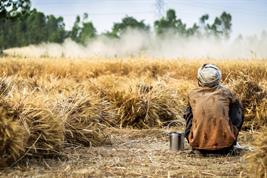13.07.2022

A growing world population and a harsher climate are posing challenges to wheat production worldwide. Production must increase, if possible without further increasing the area of agricultural land. An international research team has now calculated for the first time that global wheat production could be doubled if wheat varieties were better adapted to regional growing conditions using the great genetic diversity available in wheat gene banks and modern techniques. ZALF Director Prof. Frank Ewert and ZALF scientist Heidi Webber are co-authors of the study, which appeared in the journal Nature Food in early July.
The scientists are focused on closing the "genetic yield gap" in wheat, which is the difference between the yield potential of a wheat variety optimally adapted to the growing location and a current local wheat variety at that location.
The international team of experts, led by the agricultural research institute Rothamsted Research, believes that the genetic yield gap could be closed by using optimal cultivars and the large genetic diversity available from global and historical wheat gene banks in combination with modern breeding methods such as speed breeding (accelerated breeding programs) and genome editing. Continuous improvement in crop and soil management also contribute. If these potentials were exploited at the regional level, it could contribute significantly to global food security.
Further information:
